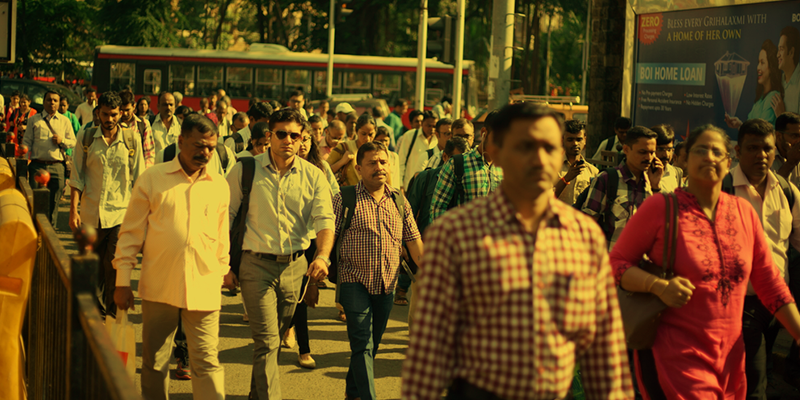The rise of Indian cities: jobs versus development
As the pull of a city is the promise of upward mobility and affordability across public goods, India is slowly drifting towards a services dominated economy.

India is on the move. The economic reform has already unveiled new investments and growth opportunities for its citizens. Although, it is a good sign for a developing country like India, it has also raised a concern for ‘how to sustain this momentum’; since turning around the dynamics of urban and rural areas, occupation structure, and GDP distribution will be crucial for India’s growth for next 10 years.
Indian cities suffer from a grave paradox as they are reported to have the lowest floor space index of construction in the world, but are among the most densely populated. It is also evident that India devotes a disproportionately high percentage of its land to agriculture at 48 per cent. The rise of cities is inevitable, with a decline in agricultural employment from 75 per cent in early post independence years to 58 per cent in current times.
According to a 2014 working paper by Denis and Zérah, the number of people for whom farming was the main occupation declined from 103 million to 98 million between 2001 and 2011. In 2014, a survey of farmers conducted by CSDS found that 62 percent of those surveyed were willing to leave farming for a job in the city.
A Lokniti survey estimates that 60 percent of farmers want their children to settle in cities, and only 19 percent think that village life is better than city life. Meanwhile, India’s farms have significant problems of under-productivity, so the country would do well to focus on non-farm avenues of growth as it works to increase the efficiency of farms.
As the pull of a city is the promise of upward mobility and affordability across public goods, India is slowly drifting towards a services dominated economy.
But the speed at which urbanisation is taking place, it may be a managerial and policy challenge for the country. This rural to urban transition suggests that an increasing number of people would gather around fast growing cities, resulting in India’s metropolitans to grow larger even as small towns congregate to become ‘urban’.
According to a report published by McKinsey Global Institute, India will witness the development of five large states, namely Tamil Nadu, Gujarat, Maharashtra, Karnataka, and Punjab. These states will have more population in cities than the villages, said report. And on a national level, urbanisation will have a much wider effect.
India will have 68 cities with population of more than one million, about 12 cities with population around four million, and six megacities with population crossing 10 million or maybe more (two of which are expectedly Delhi and Mumbai) by the year 2030. Therefore, if India has to absorb the large numbers of people leaving agriculture and having aspirations of a better life, it cannot afford to ignore its urban areas.
Urban areas not just mean large metropolises, but also the smaller cities, towns, and large villages, where much of the job creating economic activities like manufacturing, small-scale industries, and constructions are taking place.
Combine this with the anticipated level of urbanisation the task is not going to be easy. As the urban population and incomes may increase, the demand for amenities and key services will go up as well. And if this keeps happening at its current pace, India’s urban infrastructure may fall short of what was necessary to sustain the metro cities.

To match demands over the next decade, India will need to annually invest between eight per cent and 10 per cent of its GDP on developing its urban infrastructure. Investments in infrastructure and amenities along with skill development would be vital for augmenting employment productivity in these areas. India, of course, has to create its own journey now!
But there are certain things that our economy can learn from the countries and cities, who have faced the same challenges in the history. Countries like United Kingdom, South Africa, and China have turned their cities in as less as 10 years. Their struggle can be summed up in changing the dimensions of five key areas: funding, governance, planning strategies, sectoral policies, and shape of the country.
India will possibly double the size of its urban area over the next decade from three per cent of overall land area to 6 per cent and to make cities more inclusive to an increasing number of citizens, there is a drastic need for flexible master plans and strategic investment in incremental planning.
But first, transfer of land for urbanisation will require land titles to be clear and land acquisition to be transparent and participative. Second, to fund such large investments, cities will have to look towards its own citizens, whether it is through monetising of its lands, higher usage charges for public goods, or higher property taxes. Hence, the slow, bottom-up changes should be supplemented from the top, with a policy direction that recognizes urban India, and leverages this demographic change to spur economic development.
Indian cities have lot more to offer yet, and there will be a lot of support from the government for these cities to realise their true poten The rise of Indian cities: jobs versus development.
As the pull of a city is the promise of upward mobility and affordability across public goods, India is slowly drifting towards a services dominated economy.
India is on the move. The economic reform has already unveiled new investments and growth opportunities for its citizens. Although, it is a good sign for a developing country like India, it has also raised a concern for ‘how to sustain this momentum’; since turning around the dynamics of urban and rural areas, occupation structure, and GDP distribution will be crucial for India’s growth for next 10 years.
Indian cities suffer from a grave paradox as they are reported to have the lowest floor space index of construction in the world, but are among the most densely populated. It is also evident that India devotes a disproportionately high percentage of its land to agriculture at 48 per cent. The rise of cities is inevitable, with a decline in agricultural employment from 75 per cent in early post independence years to 58 per cent in current times.
According to a 2014 working paper by Denis and Zérah, the number of people for whom farming was the main occupation declined from 103 million to 98 million between 2001 and 2011. In 2014, a survey of farmers conducted by CSDS found that 62 percent of those surveyed were willing to leave farming for a job in the city.
A Lokniti survey estimates that 60 percent of farmers want their children to settle in cities, and only 19 percent think that village life is better than city life. Meanwhile, India’s farms have significant problems of under-productivity, so the country would do well to focus on non-farm avenues of growth as it works to increase the efficiency of farms.
As the pull of a city is the promise of upward mobility and affordability across public goods, India is slowly drifting towards a services dominated economy.
But the speed at which urbanisation is taking place, it may be a managerial and policy challenge for the country. This rural to urban transition suggests that an increasing number of people would gather around fast growing cities, resulting in India’s metropolitans to grow larger even as small towns congregate to become ‘urban’.

According to a report published by McKinsey Global Institute, India will witness the development of five large states, namely Tamil Nadu, Gujarat, Maharashtra, Karnataka, and Punjab. These states will have more population in cities than the villages, said report. And on a national level, urbanisation will have a much wider effect.
India will have 68 cities with population of more than one million, about 12 cities with population around four million, and six megacities with population crossing 10 million or maybe more (two of which are expectedly Delhi and Mumbai) by the year 2030. Therefore, if India has to absorb the large numbers of people leaving agriculture and having aspirations of a better life, it cannot afford to ignore its urban areas.
Urban areas not just mean large metropolises, but also the smaller cities, towns, and large villages, where much of the job creating economic activities like manufacturing, small-scale industries, and constructions are taking place.
Combine this with the anticipated level of urbanisation the task is not going to be easy. As the urban population and incomes may increase, the demand for amenities and key services will go up as well. And if this keeps happening at its current pace, India’s urban infrastructure may fall short of what was necessary to sustain the metro cities.
To match demands over the next decade, India will need to annually invest between eight per cent and 10 per cent of its GDP on developing its urban infrastructure. Investments in infrastructure and amenities along with skill development would be vital for augmenting employment productivity in these areas. India, of course, has to create its own journey now!
But there are certain things that our economy can learn from the countries and cities, who have faced the same challenges in the history. Countries like United Kingdom, South Africa, and China have turned their cities in as less as 10 years. Their struggle can be summed up in changing the dimensions of five key areas: funding, governance, planning strategies, sectoral policies, and shape of the country.
India will possibly double the size of its urban area over the next decade from three per cent of overall land area to 6 per cent and to make cities more inclusive to an increasing number of citizens, there is a drastic need for flexible master plans and strategic investment in incremental planning.
But first, transfer of land for urbanisation will require land titles to be clear and land acquisition to be transparent and participative. Second, to fund such large investments, cities will have to look towards its own citizens, whether it is through monetising of its lands, higher usage charges for public goods, or higher property taxes. Hence, the slow, bottom-up changes should be supplemented from the top, with a policy direction that recognizes urban India, and leverages this demographic change to spur economic development.
Indian cities have lot more to offer yet, and there will be a lot of support from the government for these cities to realise their true potential.
(Disclaimer: The views and opinions expressed in this article are those of the author and do not necessarily reflect the views of YourStory.)











